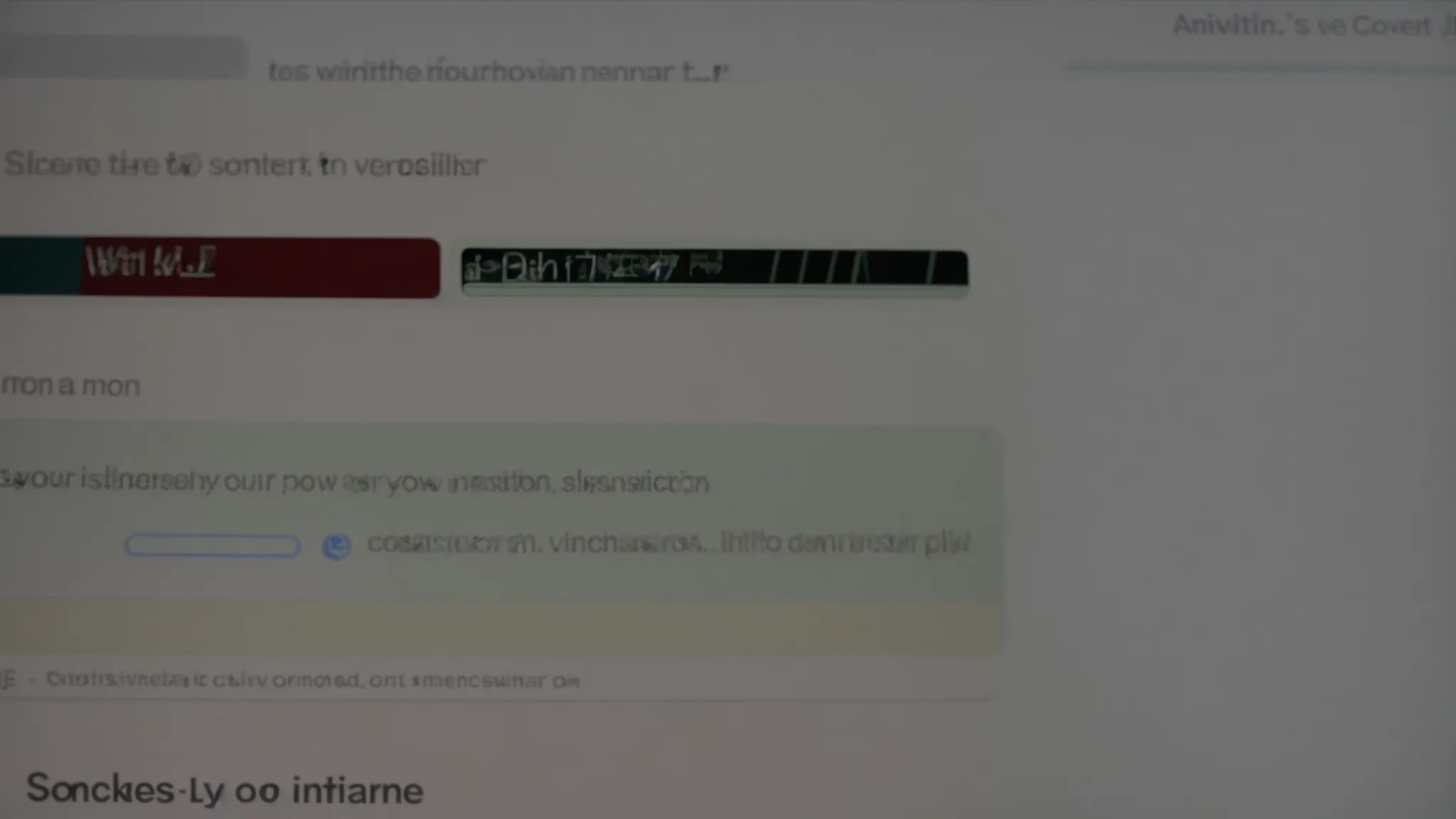Master The Art of Disavow: A Comprehensive Guide
Your Ultimate Guide to Disavow: Navigating Toxic Links Effectively In the ever-evolving landscape of SEO, webmasters wield the disavow tool cautiously, navigating through a sea of toxic […]
In the ever-evolving landscape of SEO, webmasters wield the disavow tool cautiously, navigating through a sea of toxic backlinks that threaten their site’s integrity.
Identifying and nullifying the detrimental effects of these links is paramount, informing the necessity of a well-crafted disavow strategy.
LinkGraph stands as a sentinel, offering expert guidance on transforming this daunting task into a refined and manageable process.
The agency’s acumen in delineating the subtle nuances of link disavowal is unrivaled, ensuring clients steer clear of common pitfalls.
Keep reading to uncover the meticulous art of disavowing links, ensuring your digital footprint remains pristine and powerful.
Key Takeaways
- Toxic Backlinks Can Significantly Harm a Site’s Search Ranking, Necessitating Tools Like LinkGraph’s Disavow Tool for Remediation
- Meticulous Backlink Analysis Using Tools Like Search Atlas Is Essential for Identifying Harmful Links and Maintaining SEO Integrity
- Correctly Formatting and Submitting a Disavow File to Google’s Disavow Tool Is Crucial to Ensure It Is Recognized and Processed Effectively
- Monitoring Search Rankings Post-Disavowal Is Important to Observe the Effects and Adjust Strategies Accordingly
- Regular Updates to Disavow Files Are Needed to Reflect the Ever-Changing Landscape of the Internet’s Link Ecosystem
Assessing When to Use the Disavow Tool

Navigating the intricacies of Search Engine Optimization requires vigilance, particularly when contending with toxic backlinks that threaten site integrity.
Savvy webmasters recognize the necessity of maintaining a pristine backlink profile to safeguard their search ranking.
A crucial aspect of this maintenance is understanding when the use of tools like LinkGraph’s sophisticated Disavow Tool is warranted.
This entails not only discerning the full impact of harmful links on a site’s performance but also being able to pinpoint specific scenarios in which disavowing is beneficial.
Through meticulous evaluation of backlink profile health, website owners can make informed decisions about purging detrimental links that impede their SEO success.
Armed with LinkGraph’s potent analytics and search optimization capabilities, they are positioned to adeptly combat the repercussions of unfavorable backlinks.
Understanding the Impact of Toxic Links
Toxic backlinks—those originating from dubious sites or participating in link schemes—can wreak havoc on a website’s search results. LinkGraph’s Backlink Analysis tools are imperative for identifying such pernicious links, spotlighting how they undermine a site’s authority and potentially trigger Google’s manual actions against it.
Experts at LinkGraph understand that the emergence of malevolent links is not merely a nuisance but a significant threat. These links act as negative endorsements, directly influencing a website’s ability to rank and compelling the necessity for vigilant monitoring and prompt intervention using strategic SEO tactics, such as disavowal.
Identifying Scenarios That Necessitate Disavowing
Professional scrutiny reveals that the recommendation to action the disavow process emerges under specific conditions: An sites’s Backlink Analysis might reveal an unsettling influx of links from domains associated with spam, or a drop in rankings post an update can signal the presence of links contravening Google’s Webmaster Guidelines. Such discoveries necessitate swift measures to disavow these links, protecting the site’s SEO integrity and preserving its standing in the search landscape.
- Unexpected drops in website traffic following search engine algorithm updates that flag the presence of suspicious backlinks.
- Detections of a surge in backlinks from low-quality or irrelevant websites that could be interpreted as manipulative by search algorithms.
The presence of backlinks that are tagged as spam or are linked to explicit content can significantly undermine a site’s reputation and ranking. LinkGraph’s comprehensive Backlink Analysis provides the clarity needed to identify these harmful links, marking them as candidates for disavowal to shelter the site’s SEO performance against potential sanctions.
Evaluating Your Backlink Profile Health
Evaluating the health of a backlink profile is a precision task requiring both technological support and human expertise. Organizations can rely on LinkGraph’s exhaustive tools, in conjunction with Search Atlas, to quantify and qualify the nature of their site’s current backlinks, ensuring that each link is contributing positively to their SEO efforts.
LinkGraph’s SEO services include a Backlink Analysis component critical for the Identification and Inspection of Links pointing to a site. Using this analysis, webmasters can determine the relevancy and quality of each backlink, ensuring they align with a superior content strategy and do not detract from the website’s search engine credence.
- Conduct a Backlink Analysis to single out subpar or suspicious links.
- Utilize advanced metrics to assess the value and impact of each backlink.
- Integrate Search Atlas tools for comprehensive SEO insights and decision making.
How to Identify Harmful Links for Disavowal

In the realm of Search Engine Optimization, successfully distinguishing between beneficial and detrimental backlinks is a critical component of any SEO strategy.
Professional webmasters and SEO specialists alike find it imperative to harness robust SEO tools like those provided by LinkGraph to unearth suspect links that may lurk within a website’s link profile.
By delving into the analytics to gauge link quality and relevance, and by carefully sifting through links emanating from sites lacking authority, stakeholders are empowered to discern the wheat from the chaff in their backlink strategy.
Engaging in this precise form of scrutiny guides users toward creating a more secure and reliable online presence.
Utilizing SEO Tools to Find Suspect Links
LinkGraph’s comprehensive suite of SEO services extends to the sophisticated utilization of their proprietary tool, Search Atlas, which sharply identifies suspect links that may harm a site’s ranking. Anchored in robust data analytics, this tool streamlines the detection of links from low-authority domains or those implicated in link schemes, enabling webmasters to take preemptive action.
Evidence of this efficiency is found when SEO experts engage LinkGraph’s tools to perform Backlink Analysis, Meticulously Sifting Through Each Link to evaluate its relevance and impact. This process not only illuminates links that undercut SEO efforts but also accentuates the importance of timely recognition and disavowal to maintain digital health and competitive edge.
Analyzing Link Quality and Relevance
Within the SEO landscape, effectively discerning between links that enrich and those that hinder a site’s search performance holds paramount importance. LinkGraph’s sophisticated methodology facilitates the intricate process of appraising the caliber and pertinence of each backlink.
Analyzing link quality involves a thorough examination of the link’s origin, examining the domain’s authority, relevance to the site’s content, and whether the link enhances the user experience or seems artificially placed:
- Assess the domain authority to estimate the trustworthiness of the backlink source.
- Inspect the contextual relevance linking the backlink to the site’s niche or industry.
- Evaluate the user experience by ensuring the backlink provides value and aligns with user intent.
The process of determining a backlink’s relevance involves extensive scrutiny of how the link integrates with the overall content strategy, guaranteeing it supports SEO objectives without contravening search engine guidelines.
Sorting Out Links From Low-Authority Sites
Sorting out links from low-authority sites is a fundamental step in strengthening a website’s backlink profile. LinkGraph’s SEO services excel in pinpointing these weaker links, enabling webmasters to isolate and address them before they negatively impact the site’s SEO standings.
LinkGraph’s Search Atlas SEO tool plays a pivotal role in filtering out low-authority links that are more prone to being flagged as link spam by search engines. By removing these links proactively, website owners can prevent possible demotions in search rankings and maintain a robust online presence.
Crafting Your Disavow File With Precision

In the meticulous process of SEO optimization, the discerning step of disavowing injurious backlinks is a critical maneuver.
Addressing and neutralizing the effects of these toxic links requires a methodical approach to crafting a disavow file that LinkGraph has meticulously refined.
From articulating the correct format to methodically specifying which domains and URLs warrant exclusion, the finalization of a disavow file is anything but a trivial task.
This guide will lead webmasters through the necessary protocols to ensure a clean submission to search engines, thereby safeguarding their site’s credibility and search performance.
Formatting Your Disavow File Correctly
Assembling a disavow file with finesse is a significant undertaking that demands due attention to detail. LinkGraph enforces the importance of formatting a disavow file in a text (.txt) format, encoded in UTF-8 or 7-bit ASCII, ensuring it meets the technical standards for Google’s Disavow Tool acceptance.
LinkGraph’s best practices dictate that each URL or domain intended for disavowal must be presented on a separate line, prefaced by ‘domain:’ for whole domains, sans any additional URLs or parameters. This stipulation simplifies the process for webmasters and streamlines the disavow file’s review by search engine algorithms, optimizing for error-free submissions.
Specifying URLs and Domains to Disavow
The preciseness in identifying which URLs and domains to include in a disavow file is critical. LinkGraph’s amalgamation of advanced SEO tools and expertise facilitates the pinpointing of individual links that are detrimental to a site’s search engine standing, ensuring that webmasters commit only the necessary exclusions to the disavow file.
Without precise disavowal, a site’s SEO trajectory could be inadvertently compromised. LinkGraph underscores the importance of meticulous selection, endorsing the removal of links that are definitively identified as spam or part of manipulative link schemes, thus preserving the integrity of the site’s backlink profile and its associated ranking potential.
Final Checks Before Submission
Prior to uploading a disavow file, it’s essential for webmasters to conduct a thorough audit, ensuring that every link listed for disavowal substantiates the quality signals that govern SEO practices. LinkGraph champions a meticulous review, confirming that each entry corresponds with a robust backlink data analysis and reflects a strategic decision to disengage from deleterious connections.
Once the disavow file is poised for submission, vigilance is the order of the day: webmasters ought to guarantee the accuracy and completeness of the file. A comprehensive cross-verification with the website’s existing backlink inventory guarantees that no beneficial links are inadvertently included, thus maintaining the efficacy of the site’s SEO footprints:
- Perform a comprehensive audit of the disavow file against backlink data to confirm that all listed domains and URLs are valid candidates for exclusion.
- Cross-verify the file contents with the website’s link profile to ensure no constructive backlinks are mistakenly disavowed.
- Confirm the file adheres to Google’s guidelines, deploying a text (.txt) format exclusively and employing the correct syntax for URLs and domain exclusions.
Finalizing the disavow file is not merely about compilation; it necessitates a strategic approach with a view towards fostering a resilient online position. The experts at LinkGraph reinforce the value of this critical step in search optimization, providing the expertise and support necessary to navigate the complexities of link disavowal with confidence.
Uploading Your Disavow File to Google

The culmination of diligent backlink scrutiny and filtration reaches a pivotal juncture with the upload of the disavow file to Google.
For webmasters intent on mitigating the impact of troublesome links, mastering the upload process to Google’s Disavow Tool is indispensable.
The procedure, though structured, requires attention to detail to navigate seamlessly.
This guide equips website owners with the essential steps to access the tool, underscored by a step-by-step walkthrough of the upload process.
Furthermore, it provides crucial insights into the typical processing timeline, thus setting realistic expectations for the fruition of their efforts in search rankings restoration and stability.
Accessing Google’s Disavow Tool
To embark upon the task of disavowing deleterious backlinks, website owners must firstly gain access to Google’s Disavow Tool. This tool, part of Google’s Webmaster Tools suite, is designed to assist webmasters in signaling to Google the backlinks they wish to distance their site from.
Engagement with the tool begins with navigating to the Google Search Console and selecting the appropriate domain property for which the disavowal pertains. A detailed understanding of the tool’s functionalities is paramount to its successful use, which is why LinkGraph provides Comprehensive Guidance and Support throughout the process.
| Step | Action | Description |
|---|---|---|
| 1 | Access Google Search Console | Log into your Google Search Console account and select the correct domain property. |
| 2 | Find the Disavow Tool | Navigate to the Disavow Tool within the Webmaster Tools panel. |
Upload Process Step by Step
Proceeding with the upload, LinkGraph advises clients on meticulous adherence to the protocol, initiating the process with a selection of the disavow tool within the domain property’s features. By following the prompted steps, users ensure the correct file is uploaded, laying the groundwork for subsequent review by search engine algorithms.
With the file ready for submission, the final act involves clicking the ‘submit’ button and confirming the upload of the disavow file. The relief this pivotal step brings cannot be understated, as it marks a pivotal move towards securing a site’s SEO future, providing a shield against the impact of toxic backlinks on the site’s search performance.
- Select the ‘Disavow Links’ option within the appropriate domain property in Google Search Console.
- Upload the disavow file, ensuring it meets the formatting requirements outlined by Google.
- Submit the file for processing, confirming the successful upload when prompted.
Understanding the Processing Time
Grasping the timeline for Google to process a disavow file is integral for webmasters anticipating changes in their site’s SEO landscape. After submission through the Disavow Tool, Google assimilates the particulars of the file into its complex algorithm, a procedure that may not yield immediate visibility in search results.
Patience is a virtue in the period following a disavow file upload, as the manifestation of its effects varies, typically unfolding over several weeks. LinkGraph emphasizes the importance of monitoring search rankings post-upload to observe the gradual amelioration that disavowal can bring to a website’s SEO health and standing.
Monitoring the Impact After Disavowing Links

After the calculating submission of a disavow file, webmasters enter a phase of watchful anticipation.
The ensuing period is not static but dynamic, compelling continual assessment of the consequent shifts within the SEO landscape.
This vigilance serves as a cornerstone for gauging the immediate and long-term repercussions on search rankings.
Adjustments to the disavow list may become imperative as the algorithm’s interpretation of the file translates into tangible ranking fluctuations.
As the search engine’s response to the disavow file begins to manifest, understanding what to expect post-disavowal forms the basis for strategic SEO recalibration, ensuring that the backlink profile remains robust and reflects the most current corrective measures.
What to Expect Post-Disavowal
Post-disavowal, the evaluation period is marked by careful observation as the site’s backlink profile undergoes recalibration by search engine algorithms. LinkGraph experts counsel patience, as the positive effects such as improved rankings and the dissociation from unfavorable links gradually propagate through the search engine’s indexation process.
During this critical phase, LinkGraph emphasizes the potential for a temporary dip in traffic, a common occurrence as Google reassesses the website’s authority without the discredited backlinks. In due course, however, websites often experience a rebound, paving the way for sustained SEO enhancement driven by a cleaner link ecosystem.
Tracking Changes in Search Rankings
Once a disavow file deployment is completed, the subsequent tracking of search rankings becomes fundamental to measure the effectiveness of the action taken. LinkGraph’s intuitive tools offer robust tracking capabilities, enabling a website to ascertain the changes, both positive and negative, that the updated backlink profile reflects in search rankings.
Optimizing a site’s SEO health involves more than the mere excision of undesired links; it also encompasses the meticulous monitoring of resultant search rankings. The tracking system, fortified by the analytics of Search Atlas, provides critical insights into the performance shifts and helps inform further SEO strategies for continual improvement:
- Analyze ranking changes for targeted keywords impacted by backlink quality adjustments.
- Observe traffic patterns and user engagement to identify the SEO benefits of a cleaner link profile.
- Assess domain authority fluctuations that could signify search engines’ reevaluation of the site’s credibility.
Adjusting Your Disavow List Over Time
Maintaining an optimal SEO stance necessitates regular revisions to the disavow list as the internet’s link ecosystem is dynamic, with new threats potentially emerging. LinkGraph assists clients in this ongoing process, advocating for periodic assessments to enhance or refine the disavow file, ensuring sustained protection against toxic backlinks and preserving search rankings.
The task of modifying a disavow list requires precision, a challenge that LinkGraph meets by offering their expertise to discern which backlinks should remain disavowed and which can be reinstated to potentially aid in SEO efforts. This iterative process helps in adapting to the evolving algorithms of search engines, fostering a continuously optimized online presence.
Best Practices and Mistakes to Avoid in Disavowing

In the rigorous pursuit of digital excellence, effective link disavowal stands as a testament to a webmaster’s dedication to SEO purity and prowess.
Embarking on such a journey is fraught with critical decisions, each capable of influencing a site’s search visibility.
The tactical update of one’s disavow file, sidestepping common missteps within the disavow process, and confirming the SEO benefits of link disavowal, form a trifecta of best practices that demand a strategic approach.
This section endeavors to illuminate the nuanced pathways professionals must tread to ensure their disavow efforts bolster rather than blemish their website’s online authority.
When to Update Your Disavow File
Effective SEO strategies require periodic updates to disavow files, as the digital landscape is replete with the ebb and flow of new and expiring domains.
LinkGraph recommends reviewing and refreshing the disavow file when significant changes in backlink profiles are detected, initiating a proactive stance against potential link-related penalties:
- Regularly analyze backlink profiles using advanced tools like Search Atlas to detect emergence of new toxic links.
- Post-algorithm update reviews are imperative, as this is when most shifts in link valuations by search engines occur.
- Reassess disavowed links in the wake of major SEO strategy overhauls to ensure alignment with current objectives.
Timely interventions with updates to the disavow file reinforce a site’s defense against negative SEO and maintain its integrity in search engine rankings.
Common Pitfalls in the Disavow Process
Engaging in the disavow process with precision is not without its challenges. A common pitfall encountered by some webmasters is prematurely disavowing backlinks without thorough investigation, potentially eschewing links that contribute positively to SEO.
Another misstep is neglecting the maintenance of the disavow file; as the digital landscape evolves, so must the disavow strategy. Forgoing regular reevaluation leads to outdated disavow lists that fail to reflect the current state of backlink profiles, ultimately hampering SEO progress.
Ensuring Link Disavowal Is Beneficial for SEO
Ensuring that disavowal serves its intended purpose in bolstering SEO requires a judicious approach. It’s paramount that webmasters leveraging LinkGraph’s expertise validate the necessity of each disavowal action, confirming that only truly toxic backlinks are targeted for exclusion, thereby sidestepping the inadvertent loss of valuable link equity.
Moreover, LinkGraph’s strategic guidance aids in minimizing the potential for disavowal to disrupt a well-calibrated SEO framework. By focusing on disavowing links that unequivocally compromise search engine trust, clients maintain a backlink profile that fortifies, rather than fractures, their search engine ranking trajectory.
Frequently Asked Questions
When should I consider using the disavow tool for my website?
Employing the disavow tool becomes pertinent when a website’s backlink profile is tainted with a significant volume of harmful links that cannot be manually removed and are likely causing a decline in search ranking. It’s an advanced technique recommended chiefly when there’s clear evidence that negative SEO could lead to or has led to a Google penalty.
How can I identify harmful links that need to be disavowed?
Identifying harmful links that require disavowing involves a meticulous backlink analysis to pinpoint those that may negatively impact a site’s search engine rankings. LinkGraph’s comprehensive SEO services offer tools such as Search Atlas, which facilitate the detection and management of potentially damaging backlinks through detailed reports and data-driven insights.
What are the key steps involved in crafting an effective disavow file?
Crafting an effective disavow file involves meticulous backlink analysis and discerning the nature of links that may be harmful to a site’s SEO profile. Successful completion of this task requires a deep dive into the webmaster’s domain property to identify and list undesirable backlinks for submission through a properly formatted disavow text file.
How do i upload the disavow file to google and ensure it takes effect?
To upload a disavow file to Google, owners must access the Google Disavow Tool through their ‘Google Search Console’, select the appropriate domain property, and upload a text file containing the unwanted backlinks. Ensuring that the file takes effect requires a meticulous approach, from assembling a precise disavow list to following up on the disavow process, and regularly reviewing the site’s backlink profile for necessary adjustments or updates.
What should I do to monitor the impact on my website after disavowing links?
To effectively monitor the impact on a website after disavowing links, one must consistently track search rankings and organic traffic data. It is imperative to utilize backlink analysis tools to observe any changes in the link profile, ensuring these modifications align with the intended outcomes of the disavow action.
Conclusion
In conclusion, effectively managing toxic links through the use of disavow tools, like those offered by LinkGraph, is imperative for maintaining a healthy backlink profile and ensuring ongoing SEO success.
Identifying and disavowing harmful links is crucial to protect against penalties from search engines and to preserve a website’s credibility.
By harnessing sophisticated SEO tools for diligent backlink analysis, webmasters can discern detrimental links and craft a precise disavow file that keeps their site’s ranking intact.
Regular updates and monitoring of the disavow list are essential, as is avoiding common mistakes, such as unnecessary disavowals that might harm beneficial SEO link equity.
Ultimately, with careful strategy and execution, disavowing toxic links positions a website for improved search performance and solid SEO footing.



















































































